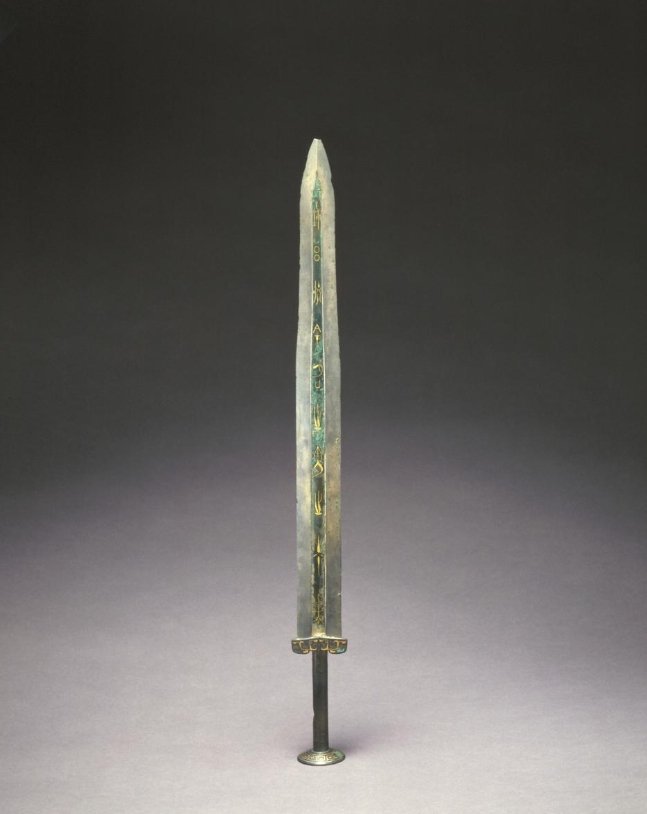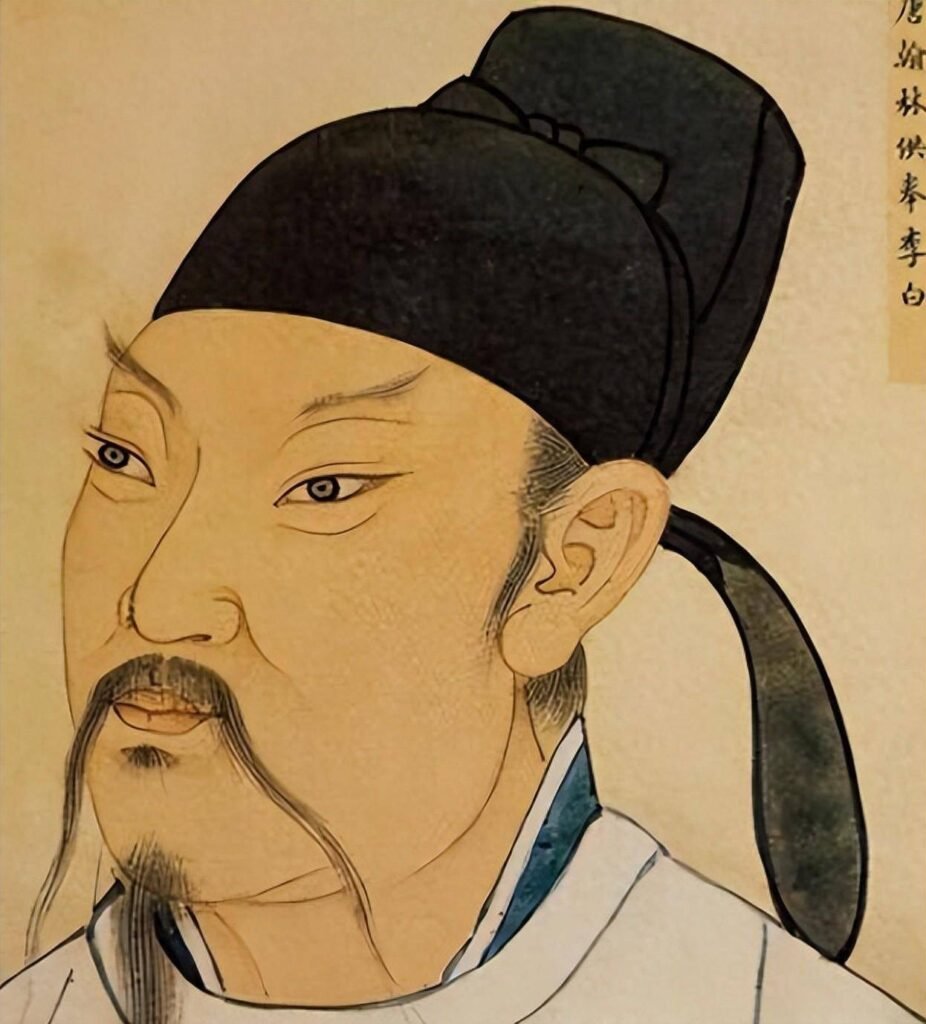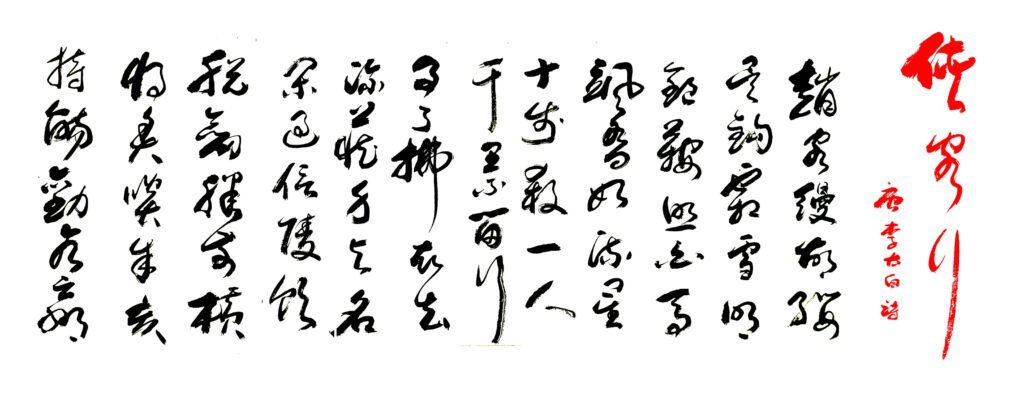Antique of Shao Ju Sword
The Shaoju Sword, dating back to the late Spring and Autumn Period, measures 54 cm in length, 5 cm in width, and weighs 0.88 kg.
This sword belonged to the State of Jin and was unearthed in Liyu Village, Shanxi Province. Currently, three swords with the same inscription are known to exist.
The sword’s tip is broken, and the ridge is recessed between the two flanges. The flanges widen diagonally, the front edge is narrow, and the thick guard is shaped like an inverted concave character. The round tang lacks a collar, and the pommel is circular.
The guard is decorated with gold inlay and inlaid turquoise beast-face patterns, while the pommel features gold-inlaid cloud patterns.

The sword’s spine bears a 20-character gold-inlaid inscription, with 10 characters on each side:
“吉日壬午,乍为元用,玄镠铺吕。朕余名之,胃之少虡。”
The terms “玄镠” (xuanliu) and “铺吕” (pulu) refer to the metals tin and copper used to forge the sword. The character “胃” (wei) is equivalent to “谓” (to name).
The inscription roughly translates to:
“On the auspicious day of Renwu, this fine sword was made. The materials used to forge it were tin and copper. I have given this sword a name and call it ‘Shaoju.'”
Backgroud
Throughout China’s long history, the sword has been imbued with profound symbolism, giving rise to a unique sword culture. The legendary tales of the Xuanyuan Sword, Ganjiang and Moye, Zhanlu, and others have been passed down through generations. Swords were once regarded as symbols of honor for nobles, knights, and men of virtue. The sword, standing tall and proud, became a literary motif celebrated by scholars throughout the ages.
Because of this cultural significance, the discovery of any rare ancient sword has always drawn great attention. Examples include the Sword of Goujian, the Qin swords from the Terracotta Army, and the jade-handled iron sword unearthed from the Guo State tombs in Sanmenxia, Henan Province (recognized as “China’s First Sword”).
Currently, there are around 300 inscribed bronze swords surviving, which combine craftsmanship and artistic value. Most belonged to kings or nobles, such as the swords of the kings of Wu, Yue, Chu, and Yan. However, among these treasures, there is one particularly unique sword that remains little known—the “Shaoju (Jù) Sword.”
A symbol of power

“干将今安在,少虡独煌煌。”
“Where is Ganjiang now? Shaoju alone shines brightly.”
Li Bai, the renowned poet and swordsman, had a deep fascination with legendary swords. In his poem The Song of the Swordsman (Xiake Xing), he mentions eight famous swords: Zhanlu, Yuchang, Taia, Jueque, Longyuan, Chixiao, Ganjiang, and Shaoju. Of these, only the Shaoju Sword still exists today.
The Shaoju Sword is the only surviving bronze sword from the Spring and Autumn period with a clearly recorded name. While some experts believe it to be a weapon of the Jin state, others assert that it must have belonged to King Shou of Yue. This type of sword was primarily used as a symbol of authority, akin to a scepter, representing power and prestige.
In Jin and Wu, bronze weapons are forged,
Flames arise, casting frosty gleams.
Where Ji Zi once hung his sword,
Princes gaze northward in reverence.
Five hegemons, seven mighty states arise,
Zhanlu faces Yuchang in splendor.
Who wields Taia in reverse?
Jueque contends, wild and crumbling.
Most fierce is Longyuan’s fury,
Chixiao swiftly cleaves the serpent.
Where is Ganjiang now?
Shaoju alone shines brilliantly.

In 1923, a villager named Gao Fengzhang from Hunyuan County unearthed more than 60 bronze artifacts in a ravine. A foreigner named Van Oech offered the highest price and purchased over 20 exquisite pieces of these bronzes. After acquiring them, he transported the artifacts back to his hometown in France, where they were exhibited at the Sénouci Museum, astonishing the entire Western world.
This news soon reached Xie Cheng’en, a local official, who quickly traveled to Hunyuan County and confiscated the remaining bronzes. Unfortunately, in 1932, Xie Cheng’en sold this collection to the renowned antique dealer Lu Fengnian, and the artifacts remained hidden from public view for 15 years.
In 1947, this collection of bronzes was resold by Lu Fengnian to a prominent antique dealer in Shanghai, Zhang Xuegeng. However, Zhang Xuegeng also intended to sell these national treasures at a high price to foreign buyers. Fortunately, the plan was thwarted by the Shanghai police, and among the artifacts was the Shao Ju Sword. Later, these national treasures were purchased by the patriotic businessman Yu Shengwu.
Thankfully, in 1949, Mr. Yu Shengwu donated the Shao Ju Sword, along with over 200 artifacts from his personal collection, to the Palace Museum in Beijing. A total of four Shao Ju Swords have been discovered. Two were lost overseas and are now housed in the Musée Guimet in France and the Nelson-Atkins Museum of Art in the United States, respectively. In 1991, another Shao Ju Sword was found in Yuanping, Shanxi Province, though its blade was damaged. Compared to the currently preserved piece, its inscription is missing the four characters “吉日” (auspicious day) and “鎛吕” (bronze and tin), but the rest is identical.
